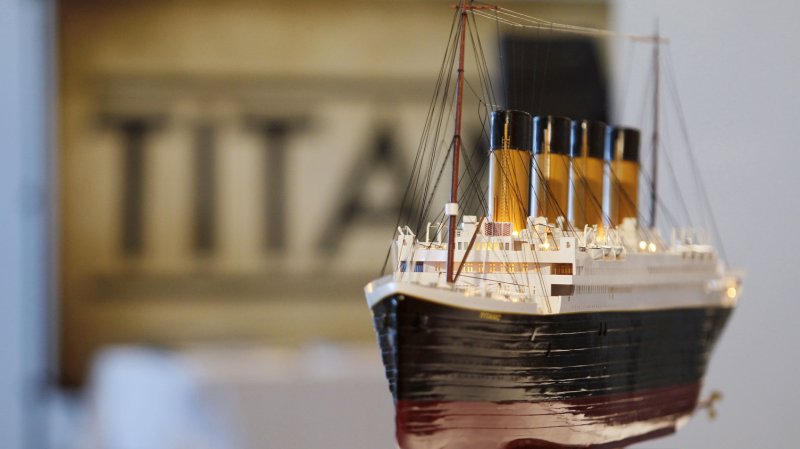A model of the RMS Titanic sits on a table near where Artifacts recovered from the wreck site of the on display before being auctioned at the Intrepid Sea, Air & Space Museum in New York City on January 5, 2012. UPI/John Angelillo |
License Photo
NEW YORK, April 10 (UPI) -- A century after the British luxury liner Titanic sank in the Atlantic, two new studies reveal rare states of nature may have played major roles in the tragedy.
In the early hours of April 15, 1912, the Titanic, on its maiden voyage out of England, collided with an iceberg and sank, taking 1,500 lives with it.
Blame for the disaster has been put on everything from an inept crew to shoddy rivets holding the ship's metal plates together.
However, two recent studies say natural forces may have created conditions perfect for the looming iceberg to go unnoticed, The New York Times reported Monday.
The first study, by researchers at Texas State University-San Marcos and Sky & Telescope magazine, found the Earth to have been unusually close to both the sun and moon in the time period leading up to the nautical disaster, creating large amount of ice in the Titanic's path, including the deadly iceberg.
Researchers suggested high tides created by the gravitational pulls of the sun and moon between December 1911 and February 1912 sent masses of icebergs normally gathered along the coastlines of Labrador and Newfoundland into the North Atlantic shipping lanes.
"We don't claim that our idea is conclusive," Dr. Donald Olson, a physicist at Texas State, but he added the team continued to find new supporting evidence after the publication of the study in Sky & Telescope's April issue.
"We found there had been remarkable tidal events around the globe -- in England and New Zealand," he said.
The second study, by research Tim Maltin of London, suggests the icy waters the Titanic sailed through were ideal conditions for cold mirages, which occur when cold air bends light rays downward, which distorts horizon lines.
Maltin cited three lookouts aboard the Titanic who reported the distant view as being "hazy," which he said he believed to be an effect of a cold mirage.
"There were no heroes, no villains," Maltin said. "Instead, there were a lot of human beings trying to do their best in the situation as they saw it."
Maltin's book, "Titanic: A Very Deceiving Night," is to be released this week as an e-book.















